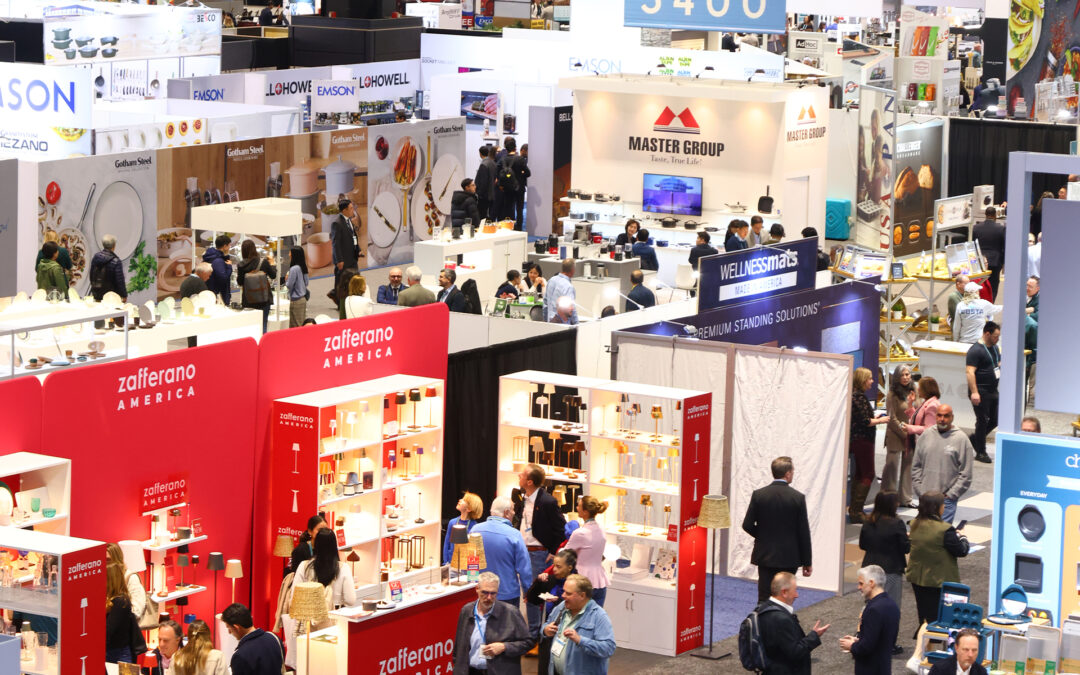The second day of Innovation Theater sessions at The Inspired Home Show covered a wide range of topics including how consumers are looking at and interacting with the housewares and home furnishings industry.
Inflation’s Influence on Housewares Consumer Behavior
Peter Greene, Numerator
Among the presenters, Peter Greene of Numerator in the session Inflation’s Influence on Housewares Consumer Behavior said the aftermath of the COVID-19 pandemic and the ensuing period of inflation has shaken up the home goods sector, but it also has influenced a consumer mindset that continues weighs against purchasing in the sector at least for the moment. This year, 28% of consumers, particularly older, lower-income and rural consumers, said they were worse off than a year ago while 23% said they were better off, with that group overrepresented by high-income consumers and younger shoppers who have their best-earning years in front of them. However, consumers across the board are making fewer shopping trips to housewares-focused stores, which naturally influences how much they’re going to spend in the sector.
How inflation affects the market is both direct and incremental, and the result on non-discretionary spending affects housewares in both ways. Non-discretionary product price gains in categories such as pet products and grocery have significantly pressured discretionary categories, and it’s not just a matter of spending less. Overall the effect on disposable income resulted in 40% of consumers trading down when they did purchase household products.
However, both the real effect on discretionary spending and the consumer pessimism that it generated may be fading. In 2023, Greene said, 29% of consumers expect to spend less on groceries and 25% said more. Although a greater proportion of consumers say they plan to spend less on housewares, a percentage said they would pay more, Greene made the point that consumers who expect to spend less on groceries as inflation moderates can start spending more on discretionary items including housewares and home furnishings.
“This is great news for our industry,” Greene said.
Still, he pointed out, consumers intend to watch for sales and discounts when it comes to discretionary spending, so the pressure to promote housewares will remain. Balancing that, consumers aren’t looking for the cheapest items available. They want quality and will weigh prices available for the grade of product they want.
One other point Greene made: Pay attention to single-person households populated by younger consumers, as they are going to drive sales growth this year. Market entry households will generate 30% of housewares spend in 2023, he said.
Food and Flavor 2023-24: Directional Dining and Drinking Trends and the Home & Housewares Consumer
Leigh Ann Schwarzkopf, Project Partners Network
Leigh-Ann Schwarzkopf of Project Partners Network in the session Food and Flavor 2023-2024: Directional Dining and Drinking Trends said indicators demonstrate that consumers are looking to cook more at home as a hedge against inflation. However, they want flavor and not just familiar flavors. Consumers today are much more enthusiastic about new cuisines and taste sensations in part because they get a view on new cooking possibilities on social media. They find recipes on social media even as they look for new kinds of meals that can be prepared at a personally comfortable value. Add to that the growth of entertaining at home and even the creation of new celebratory templates such as elaborate senior birthday parties are becoming even more common.
Food has become a much more critical part of how consumers think about their leisure time. Schwarzkopf pointed out that three or four consumers in the United States travel for the food. As research suggests they are dubious about discretionary travel in the current economic circumstances and even cutting back on restaurant spending, the desire to experience new flavors and cuisines is being satisfied by what they can find on social media, whether through recipes, influencers or the kind of online instruction that’s generated by retailers such as Sur La Table.
It’s not just about cooking up new recipes. Consumers are thinking about food differently. They are looking for new cuisines such as Moroccan, but they are trying new forms of fusion combining, for example, increasingly popular Latin cuisines. They also are combining behaviors to save money, ordering takeout or delivery of certain items and then combining them with their own cooking whether from scratch or leftovers. As for leftovers, they are saving food than looking for new ways to spice it up for the second serving occasion.
Schwarzkopf said 76% of consumers want to try new foods and all generations are interested in new flavors. A direct effect of this is the purchase of new cookware. Cooking many cuisines requires or at least encourages, for authenticity’s sake, specific cookware or tools. So looking for new tools goes well beyond woks can include pans for cooking paella or even specialized racks that make it easier to assemble and serve tacos. She added that cookware companies should pay special attention to social media influencers who can not only show directions that food is taking but also could be a source of partnership to promote products.
Decision-Making When Instability Is the Only Constant
Nick Stene & Catalina Flores, Euromonitor International
Nick Stene stated that consumers are waiting for the next big shock, but that they are also looking for reliability. As such, consumers are prepared for the worst but looking over the horizon for something better. And it’s not much different with business.
“Reliability is what they are seeking,” he said.
In the session, Decision Making When Instability Is the Only Constant, Stene, works with Euromonitor’s research process, services and technologies and Catalina Flores, senior analyst, home and technology focused on the United States and Canada, looked at big-picture developments and those that have a specific effect on home goods.
Stene noted that the effects of the pandemic, inflation, geopolitical instability, rickety supply chains and related disruptions have made figuring out where things are going much more difficult. Even pricing, which many companies felt as if they had it down to a science pre-pandemic, has been scrambled as companies have tried to roll with inflation and sometimes waited too long to raise prices with the result of undermining their own bottom lines, sometimes to a dangerous degree.
He said even in the forecasting sector, using the past to provide guidance for the future has become a less reliable model. Much of the past has been buried under the present. Just in time is dead, he said, replaced by just in case as companies recognize that they have to make a commitment to ensure product keeps moving to consumers even when logistics systems falter. As such, we live in an era of constant vigilance where companies and consumers are becoming more flexible in their thinking and willingness to make changes to meet sudden shifts in their financial situations.
Flores said that even amid uncertainty, Euromonitor expects home categories to normalize over the coming months. Food storage and hydration are among those housewares categories that benefited from the pandemic than the return to work, as people wanted to have their own food and drink available for wellness reasons. Saving on food and spending less on restaurants will continue as inflation remains an issue that impacts consumer bank accounts and general thinking about how they should use their money.
In that environment, opportunities exist to drive sales in, for example, products that make cooking faster and easier. Although they learned to cook or expanded their skills, consumers don’t want to spend more time than necessary on the task, even if they are looking for advanced results. So, products that make gourmet or near-gourmet quality food faster and easier are likely to see consumer approval. Non-stick products, for example, win favor because they’re easier to use and less of a cleanup chore.
She added that climate change is an issue that all businesses will have to address, particularly as Gen Zers make it a particular issue and even more so than Millennials. Second-hand shopping is becoming more important with more consumers looking to purchase refurbished housewares. As for Millennials, she emphasizes that they shop online more regularly than any other demographic group. So, businesses that make home-related products and who want to target Millennials should be creating products backed by selling initiatives that address their needs. That’s especially the case with products that make life easier for busy young householders and parents.





